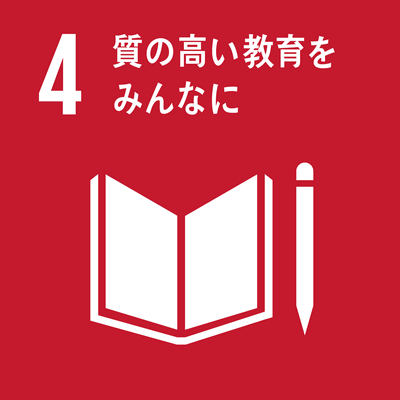シラバス表示
シラバスの詳細な内容を表示します。
→ 閉じる(シラバスの一覧にもどる)
科目の基本情報
| 開講年度 | 2024 年度 | |
|---|---|---|
| 開講区分 | 生物資源学研究科(博士前期課程)生物圏生命科学専攻 | |
| 受講対象学生 |
大学院(修士課程・博士前期課程・専門職学位課程) : 1年次 |
|
| 選択・必修 | 選択必修 |
|
| 授業科目名 | 生物制御生化学演習 | |
| せいぶつせいぎょせいかがくえんしゅう | ||
| Seminar on Regulatory Biochemistry | ||
| 単位数 | 2 単位 | |
| ナンバリングコード | BIOR-Life-5172-005
|
|
| 開放科目 | 非開放科目 | |
| 開講学期 |
通年 |
|
| 開講時間 |
|
|
| 授業形態 |
対面授業 * 状況により変更される可能性があるので定期的に確認して下さい
「オンライン授業」・・・オンライン会議ツール等を利用して実施する同時双方向型の授業 |
|
| 開講場所 | ||
| 担当教員 | 寺西 克倫(生物資源学研究科生物圏生命科学専攻) | |
| TERANISHI, Katsunori | ||
| SDGsの目標 |
|
|
| 連絡事項 | * 状況により変更される可能性があるので定期的に確認して下さい |
|
学修の目的と方法
| 授業の概要 | 本演習では研究に直結した生物が有している生命にかかわる分子の制御に関して演習する。 |
|---|---|
| 学修の目的 | 生物の生命活動をになっている分子の制御方法について知り、理解できるようになることを目的とする |
| 学修の到達目標 | 先端の生命現象研究の認知および研究方法についての理解などを深める. |
| ディプロマ・ポリシー |
|
| 成績評価方法と基準 | 出席およびレポートで評価する。 |
| 授業の方法 | 演習 |
| 授業の特徴 |
その他、能動的要素を加えた授業(ミニッツペーパー、シャトルカードなど) |
| 授業アンケート結果を受けての改善点 | 学生の希望に対応 |
| 教科書 | なし |
| 参考書 | |
| オフィスアワー | 寺西:随時,生物資源学部740 |
| 受講要件 | なし |
| 予め履修が望ましい科目 | なし |
| 発展科目 | なし |
| その他 |
授業計画
| MoodleのコースURL |
|---|
| キーワード | 生理現象化学,生体機能関連化学 |
|---|---|
| Key Word(s) | Molecular Biochemistry,Biofunctional Chemistry |
| 学修内容 | 以下の項目を含む最新研究論文について、受講生が内容を紹介し、それに対する討論および関連事項の解説・教授を行なう。 (1)A turn-on mitochondria-targeted near-infrared fluorescent probe with a large Stokes shift for detecting and imaging endogenous superoxide anion in cells (2)A turn-on mitochondria-targeted near-infrared fluorescent probe with a large Stokes shift for detecting and imaging endogenous superoxide anion in cells (3)Non-invasive real-time imaging of reactive oxygen species (ROS) using autofluorescence multispectral imaging technique: A novel tool for redox biology (4)Non-invasive real-time imaging of reactive oxygen species (ROS) using autofluorescence multispectral imaging technique: A novel tool for redox biology (5)Protopine Protects Mice against LPS-Induced Acute Kidney Injury by Inhibiting Apoptosis and Inflammation via the TLR4 Signaling Pathway (6)Protopine Protects Mice against LPS-Induced Acute Kidney Injury by Inhibiting Apoptosis and Inflammation via the TLR4 Signaling Pathway (7)Near-Infrared Chemiluminescent Reporters for In Vivo Imaging of Reactive Oxygen and Nitrogen Species in Kidneys (8)Near-Infrared Chemiluminescent Reporters for In Vivo Imaging of Reactive Oxygen and Nitrogen Species in Kidneys (9)Phenylenediamine-Based Carbon Nanodots Alleviate Acute Kidney Injury via Preferential Renal Accumulation and Antioxidant Capacity (10)Phenylenediamine-Based Carbon Nanodots Alleviate Acute Kidney Injury via Preferential Renal Accumulation and Antioxidant Capacity (11)A Simple Ex Vivo Semiquantitative Fluorescent Imaging Utilizing Planar Laser Scanner: Detection of Reactive Oxygen Species Generation in Mouse Brain and Kidney (12)A Simple Ex Vivo Semiquantitative Fluorescent Imaging Utilizing Planar Laser Scanner: Detection of Reactive Oxygen Species Generation in Mouse Brain and Kidney (13)Precise Monitoring of Drug-Induced Kidney Injury Using an Endoplasmic Reticulum-Targetable Ratiometric Time-Gated Luminescence Probe for Superoxide Anions (14)Precise Monitoring of Drug-Induced Kidney Injury Using an Endoplasmic Reticulum-Targetable Ratiometric Time-Gated Luminescence Probe for Superoxide Anions (15)L-Cysteine and L-Serine Modified Dendrimer with Multiple Reduced Thiols as a Kidney-Targeting Reactive Oxygen Species Scavenger to Prevent Renal Ischemia/Reperfusion Injury (16)L-Cysteine and L-Serine Modified Dendrimer with Multiple Reduced Thiols as a Kidney-Targeting Reactive Oxygen Species Scavenger to Prevent Renal Ischemia/Reperfusion Injury (17)Molybdenum-based nanoclusters act as antioxidants and ameliorate acute kidney injury in mice (18)Molybdenum-based nanoclusters act as antioxidants and ameliorate acute kidney injury in mice (19)Visualization of oxidative injury in the mouse kidney using selective superoxide anion fluorescent probes (20)Visualization of oxidative injury in the mouse kidney using selective superoxide anion fluorescent probes (21)Real-time in vivo mitochondrial redox assessment confirms enhanced mitochondrial reactive oxygen species in diabetic nephropathy (22)Real-time in vivo mitochondrial redox assessment confirms enhanced mitochondrial reactive oxygen species in diabetic nephropathy (23)Real-Time Discrimination and Versatile Profiling of Spontaneous Reactive Oxygen Species in Living Organisms with a Single Fluorescent Probe (24)Real-Time Discrimination and Versatile Profiling of Spontaneous Reactive Oxygen Species in Living Organisms with a Single Fluorescent Probe (25)Obesity and Diabetic Kidney Disease: Role of Oxidant Stress and Redox Balance (26)Obesity and Diabetic Kidney Disease: Role of Oxidant Stress and Redox Balance (27)Biocompatible Reactive Oxygen Species (ROS)-Responsive Nanoparticles as Superior Drug Delivery Vehicles (28)Biocompatible Reactive Oxygen Species (ROS)-Responsive Nanoparticles as Superior Drug Delivery Vehicles (29)In vivo multiphoton imaging of mitochondrial structure and function during acute kidney injury (30)In vivo multiphoton imaging of mitochondrial structure and function during acute kidney injury |
| 事前・事後学修の内容 | 授業で発表する英語専門論文を探索し、発表する準備を行う。 1回の授業当たり、2時間以上の準備と2時間以上の復習を要する。 |
| 事前学修の時間:120分/回 事後学修の時間:120分/回 |

